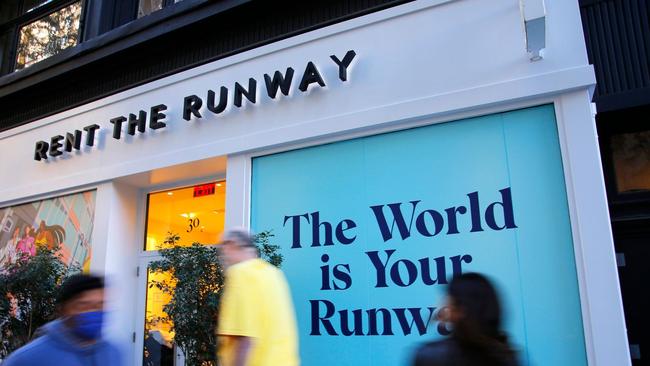Rent the Runway’s plan for regrowth starts with a new marketing chief
Rent the Runway has spent the best part of four years fixing its operations. Now it says it is ready to start winning back customers.

Rent the Runway, which dramatically scaled back its marketing in the years since the pandemic blew apart its business model, is planning to make some noise again.
The fashion rental service on Wednesday named Natalie McGrath as its chief marketing officer, establishing a dedicated marketing leader role for the first time in years. McGrath, who had been vice president of marketing at payment company Afterpay, has been tasked with expanding the company’s customer base, in part by returning the brand back to the cultural relevance it enjoyed before the pandemic.
Layoffs at the company in January freed some cash to increase marketing efforts in 2024, said Jennifer Hyman, chief executive and co-founder.
“This is really about refocusing on growth, which we certainly have not been doing over the last few years,” Hyman said.
Rent the Runway offers a trove of designer outfits for work, vacations, parties, weddings and other occasions that women can rent through a monthly subscription. But the arrival of Covid-19 in 2020 induced many customers to work from home, delay vacations, cancel parties and hold remote weddings. They canceled or paused their Rent the Runway memberships in droves – around 50 per cent of its 100,000 subscribers in a matter of days, Hyman said in a 2022 Wall Street Journal interview.
Rent the Runway closed its five physical stores and never reopened them. Maureen Sullivan, who oversaw its marketing as president, left the business. The company stopped most of its marketing and quit making appearances at live events even as they began to return, all while furloughing or laying off half its workforce and rebrokering deals with the designers who supply its inventory.
“There was no ability to create demand for Rent the Runway for about the first one to two years of Covid,” Hyman said. “At the same time, we had to focus on tremendous cost-cutting because revenue dipped dramatically during that period of time.” The company pushed ahead with its public market debut in October 2021, but reduced its corporate workforce by another 24 per cent less than a year later as customers continued to decline. This January’s layoffs, designed to free up more capital to reinvest in its growth strategy and affecting about 10 per cent of corporate roles, followed a decline in new-customer retention as subscribers, growing once again, found that the company didn’t have enough of the most popular styles in stock.
Inventory depth has now been improved, Hyman said. The company has also invested in its customer-experience and back-end technology, and changed the way it buys its inventory to improve margins, she added.
Its plan to pursue new customers again also comes as consumers have become familiar with its proposition, a shift from its venture-capital-backed early years when rental wardrobes were a newfangled concept. The size of the global apparel rental market more than doubled to $6.2bn between 2016 and 2023, according to data analytics firm GlobalData.
Rent the Runway will no longer have to expend as much marketing energy on explaining what clothing rental actually is, Hyman said. “This is actually the state that we’ve always wanted to get to, where we don’t have to market the service, we could actually market the product,” she said.
A more mature market, however, means more competition. The last time Rent the Runway went big on marketing, it was one of very few players offering clothing rental. Now, the scene is littered with startups as well as offerings from established retailers such as Urban Outfitters’ Nuuly, which last November reported just under 200,000 active subscribers. Rent the Runway in comparison reported 131,725 active subscribers in December.
New CMO McGrath, who has also worked in marketing at retailers including Boohoo Group, Coach and Alexander Wang, said she plans to build a marketing team that will move fast to tap in to cultural trends and customers’ fluctuating behaviors.
The brand plans to make a return to live events and experiences, place ads across a range of publications and platforms, and increase its spending on public relations, influencer marketing and ambassador programs -- all practices that first helped the brand pop in its prepandemic years, Hyman said.
“This is about infusing ourselves across all of the things that the customer cares about, whether she’s traveling to Europe that summer, whether she’s going skiing, whether she’s creating beautiful tables for Thanksgiving,” McGrath said.
The company also intends to go after lapsed customers -- those who might have stopped renting when they started working from home or were burned by a bad experience with the company, Hyman said.
“If you had been a customer before Covid or even last year when we were having some of our inventory issues...you wouldn’t have the right impression in terms of what we could offer,” she said.
The Wall Street Journal






